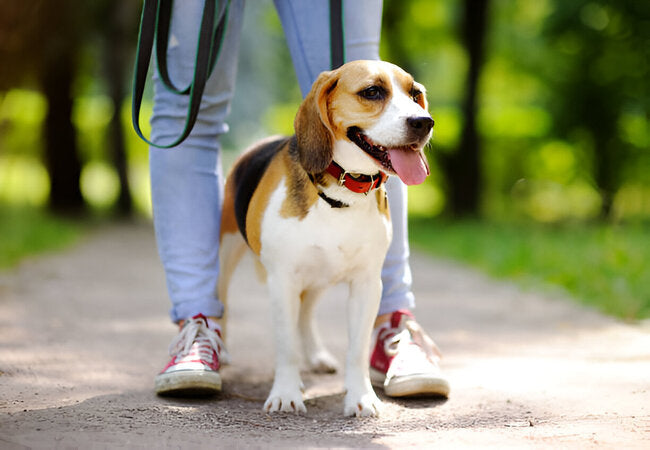🐾 2025 Vet Insight: Dog-Walking Tips for Healthy, Happy Walks 🚶♂️🐕

In this article
2025 Vet Insight: Essential Dog-Walking Tips—Vet‑Approved Routine, Gear & Safety 🚶♂️🐾
By Dr. Duncan Houston BVSc
Hi there—I’m Dr Duncan Houston BVSc, veterinarian and founder of Ask A Vet. Walking your dog isn’t just a daily routine—it’s vital for their physical health, mental well-being, and your bond together. In this in-depth 2025 vet insight, I’ll guide you through every aspect, from walk frequency and gear selection to safety strategies, leash manners, and enriching activities that make walks beneficial, safe, and joyful 😃🐶.
1. How Often Should You Walk Your Dog?
Daily walks are essential. Most dogs benefit from at least 20–30 minutes per day, while high-energy breeds may need up to 2 hours. Split walks into multiple sessions—morning, evening, and midday—to spread out exercise, mental stimulation, and potty needs.
2. Schedule & Routine 🗓️
- Consistent timing: Helps your dog regulate energy and bathroom cues.
- Shorter, frequent walks: Especially useful in extreme weather or for elderly pups.
3. Choose the Right Gear 🧷
- Leash: Fixed-length 4–6 ft leash with reflector for safety and control. Avoid retractables in busy areas.
- Harness vs collar: Harnesses reduce neck stress; no-pull options help with pulling.
- Paw care: Wipe off salt, grit, and chemicals; consider dog booties in cold or hot weather.
- Weather protection: In winter, use dog jackets and gloves. Avoid hot pavement in summer by walking early or late.
4. Safety First 🚦
- Stay on grass vs pavement during heatwaves—pavement can reach 30–40°F hotter.
- Shorten walks in extreme cold and monitor for paw damage or hypothermia.
- Never let off-leash near traffic, frozen surfaces, or harsh environments during winter.
- Always carry water and poop bags—responsible care supports health and community goodwill.
5. Build Loose-Leash Manners
Walking politely improves safety and comfort:
- Use clicker methods: “I Am a Rock” (stop when pulling) and “Back & Forth” or “Off at an Angle” to discourage pulling.
- Reward slack leash behavior quickly—mark and treat at your side, not ahead.
- Avoid tug-of-war with leash or strangling gear—adds stress and confusion.
6. Enrich Walks for Body & Mind
- Offer varied routes and surfaces to satisfy their curiosity and senses.
- Include sniff breaks—dogs explore most with their noses.
- Incorporate training: sit for crossings, heel at intersections, recall drills—promotes bonding and obedience.
- Alternate with dog parks, indoor obstacle courses, or events to widen exposure.
7. Weather-Specific Tips
- Winter: Walk in midday, under 30 mins, use booties + coats, clean paws after walks.
- Summer: Walk early/late, stay on grass, carry water, avoid heat exhaustion from hot pavements.
8. Troubleshoot Common Walk-Time Issues
- Pulling persists: Stop when the leash tightens and reward slack. Try a head halter or a no-pull harness if needed.
- Fear or reactivity: Redirect focus, increase distance, reward calm, then gradually decrease threshold.
- Heat/paw sensitivity: Adjust schedule, surfaces, and gear—use booties and shorter walks.
9. Deepening the Bond Through Walks
Walks are powerful for connection:
- Talk and praise during walks—your voice builds trust.
- Shared training builds teamwork and mutual respect.
- Adventure-style walks (new trails, events) heighten trust and joy.
10. When to Consult a Vet or Behaviorist
- Reluctance to walk, repeated lameness, or unusual hesitation may signal pain—vet exam advised.
- Persistent pulling, leash aggression, or fear requires structured behavior support.
- Ask A Vet can analyze walk recordings, tailor gear and training plans, and support behavioral insight.
🔧 Ask A Vet Tools & Support 🛠️
- 📹 Upload walk videos for leash control and behavior assessment
- 🗓 Personalized pacing, gear recommendations, compassion training plans
- 🌦 Weather-adapted walk strategy for comfort & safety year-round
- 📈 Track progress: Slack, pull rate, enjoyment levels over time
🩺 Final Vet Reflection
Dog walks are more than just exercise—they’re a cornerstone of your dog’s health, trust, and happiness. With a thoughtful schedule, suitable gear, safety focus, and enrichment, each walk becomes a meaningful moment. If you ever spot concerns—from gait changes to reactivity—Ask A Vet is here to help ensure every step is supportive and joyful. 🐾❤️






